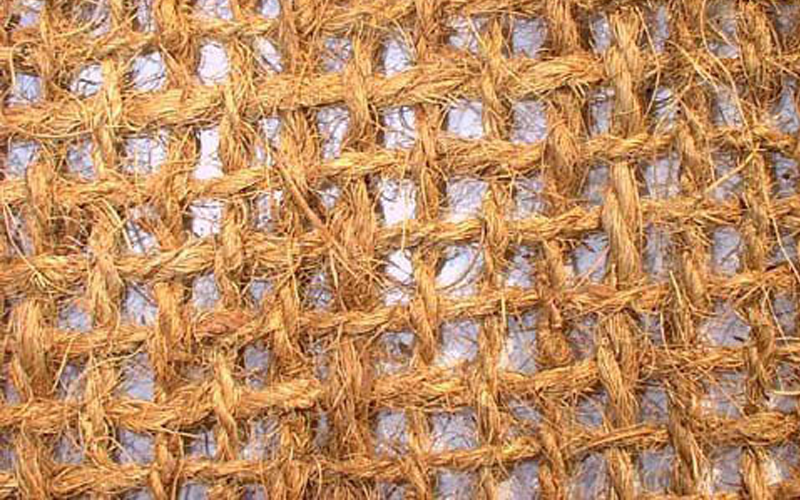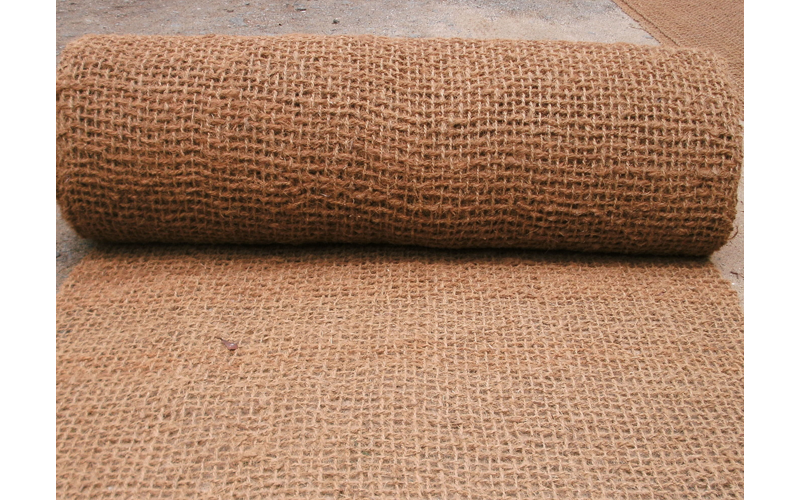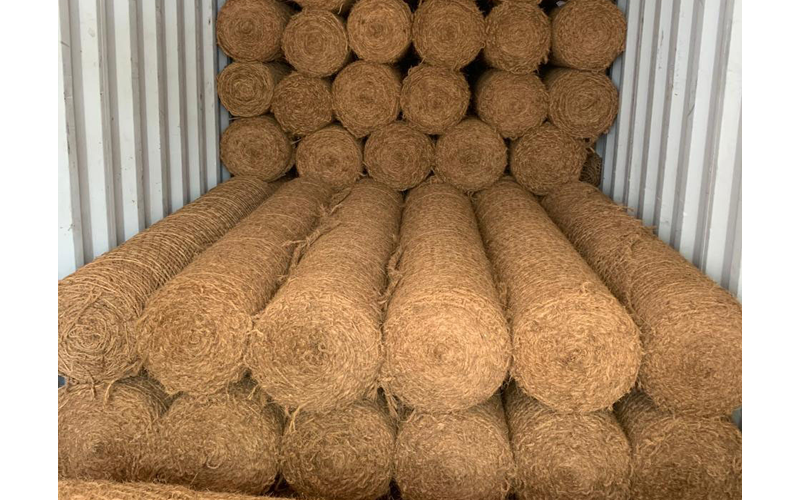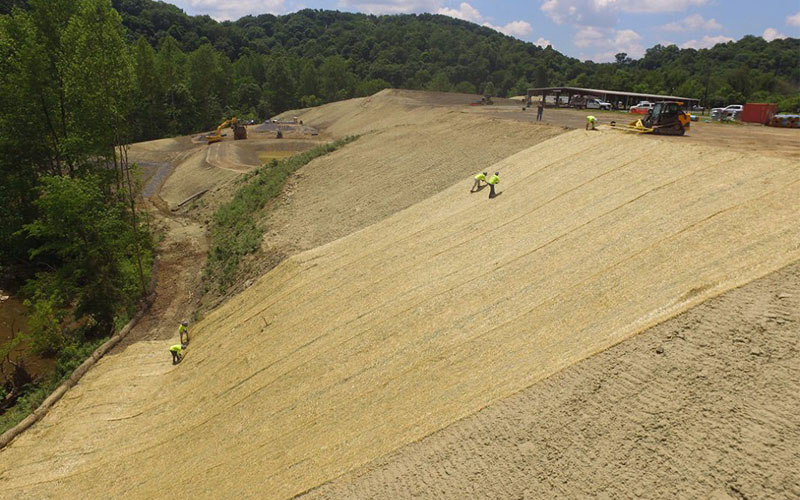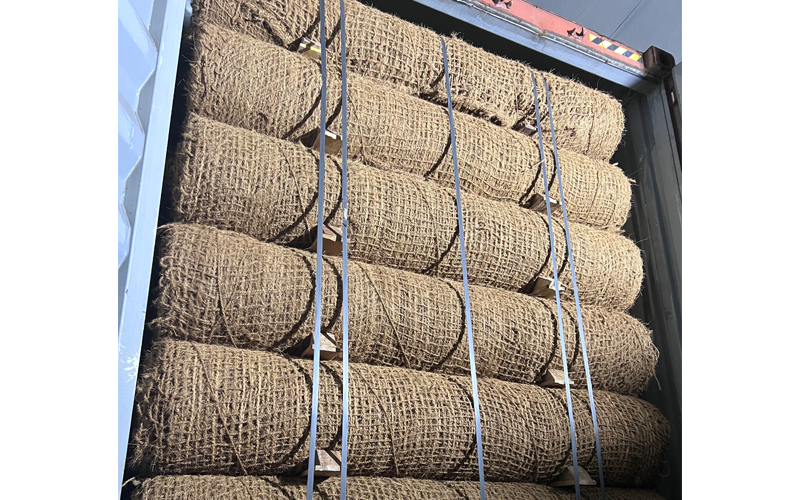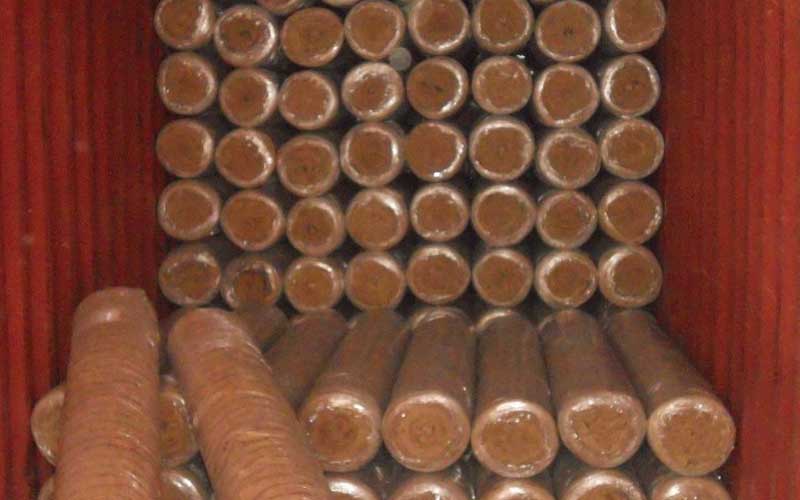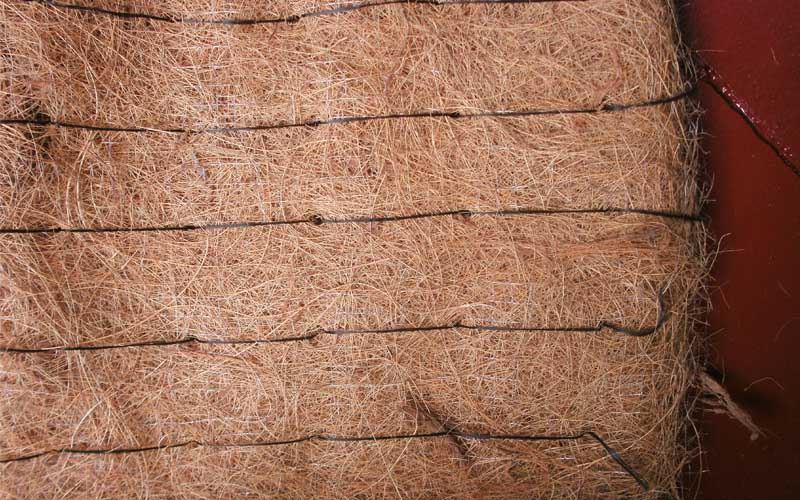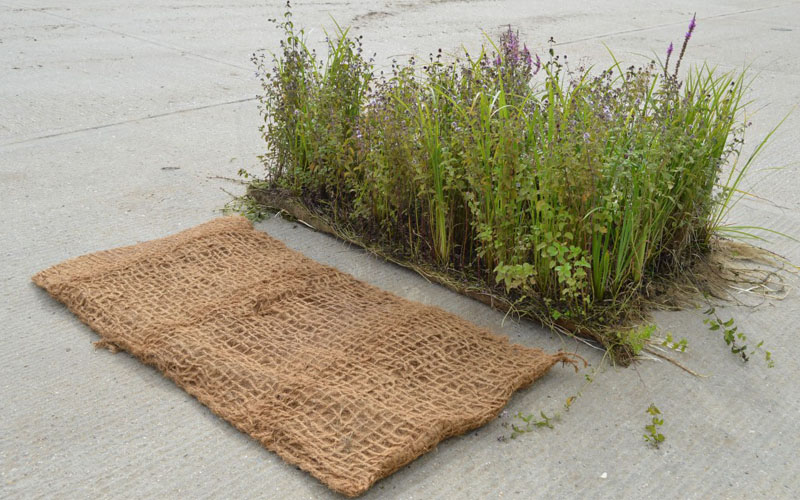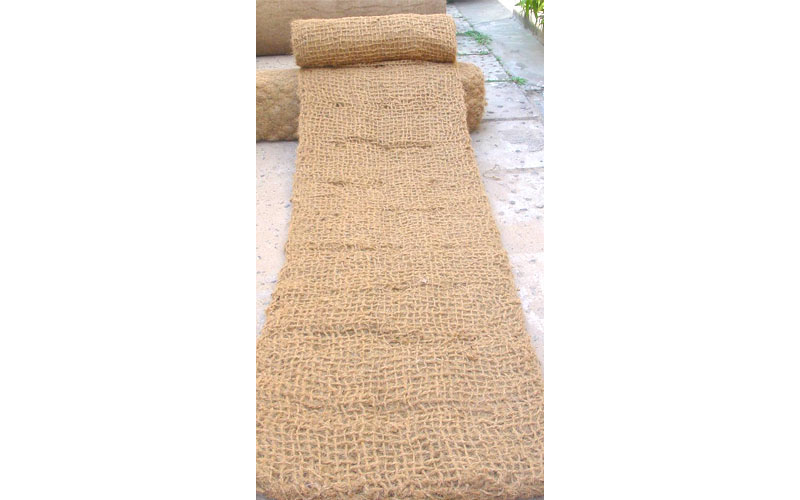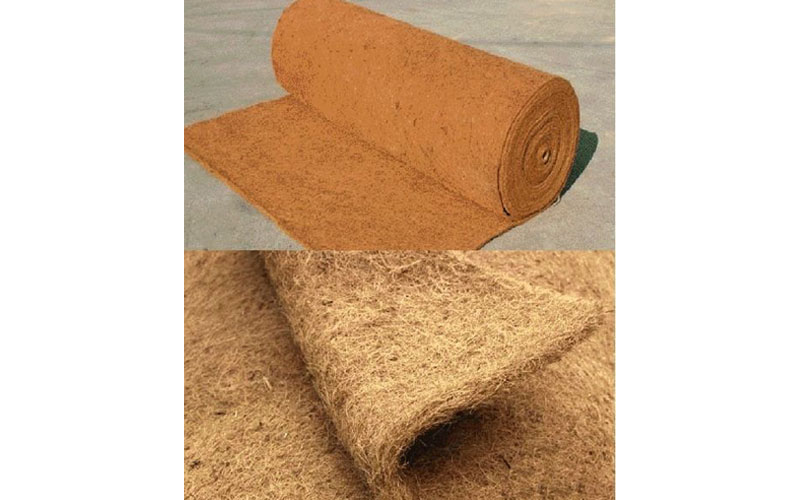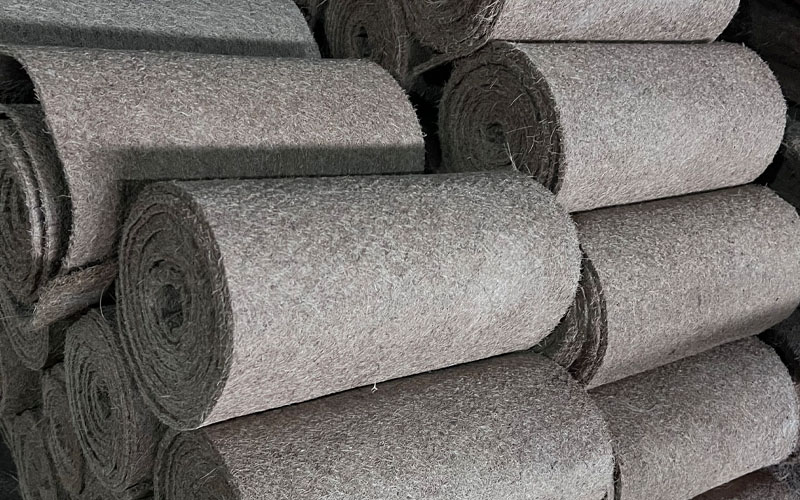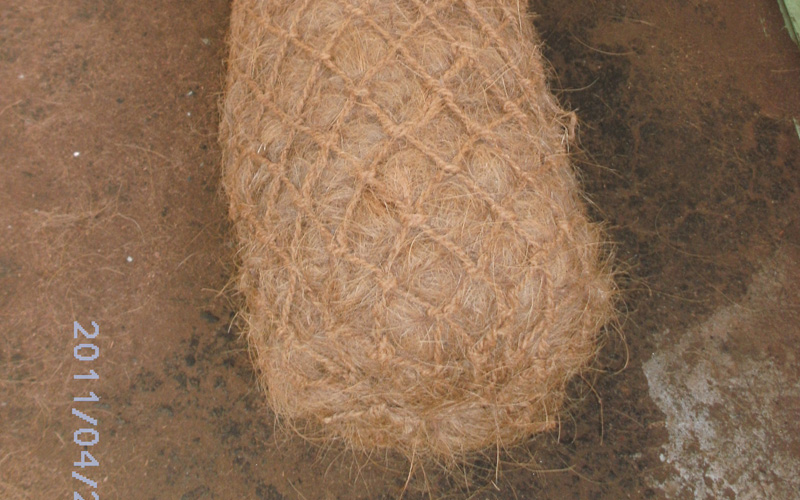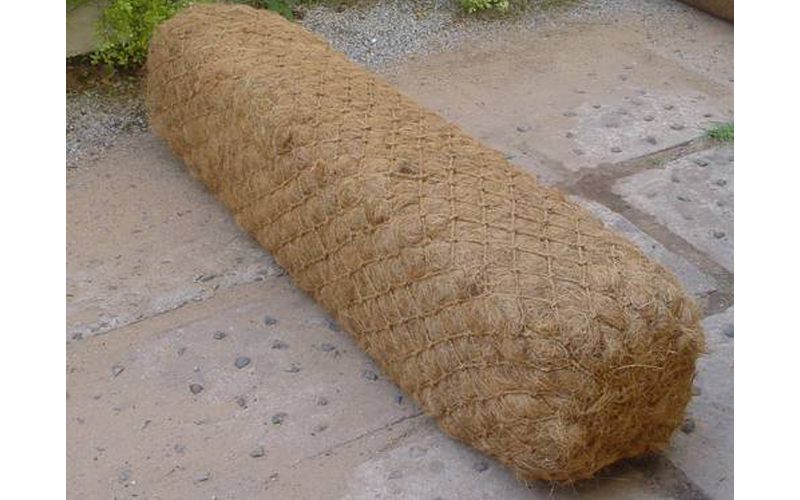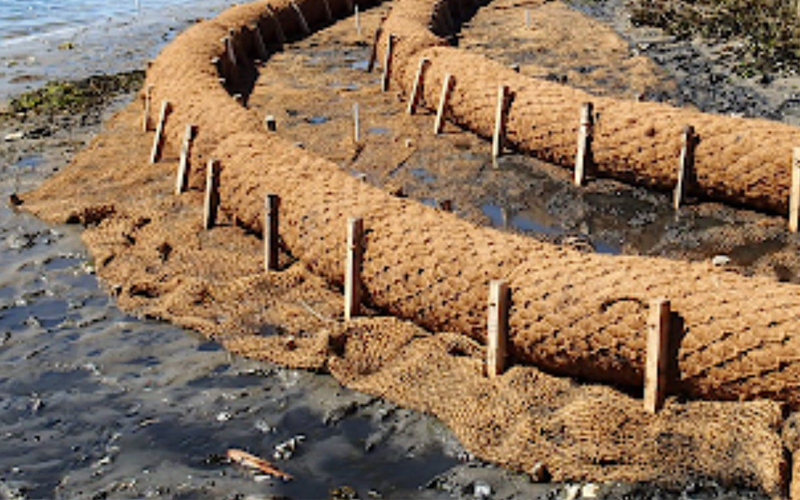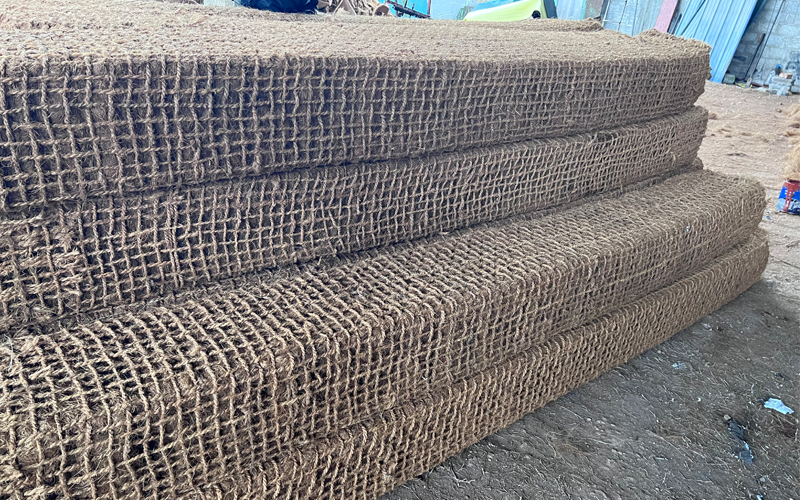Coir Erosion Control Products
Coir Geotextile / Coir Netting
Coco Geo Textile is a 100% natural product as it is made out of pure coir, drawn from the husk of the coconut and uses no synthetic material. Coir Geo Textile mats are manufactured using hand twisted yarn as well as machine spun twine. It is used as a blanket to prevent soil erosion and it can be used for all soil bioengineering and erosion control application in stream banks, slopes, wetlands, hillside soils and golf course development. Since coir fibre is naturally resistant to rot moulds and moisture it needs no chemical treatment. It is hard and strong and it has the strength and durability to protect the slopes from erosion while allowing vegetation to flourish. Geo Textile is widely used for civil engineering applications and slope stabilization applications as a mechanical strength that is necessary to hold soil in place and prevent erosion. This extended longevity period allows enough time to establish adequate vegetation allowing erosion control the way nature intended.
Coir Geotextile Nets Are
- 100% environment friendly
- Will last long before decomposing
- Very resistant to UV degradation as compared to Synthetic mats
- Ability to handle high water velocities. - High water absorption capacity of coir fibres promote seed germination
- Excellent results in Hydroseeding - Will decompose after a period of time leaving excellent mulch for the growing vegetation
- Cost effective compared to synthetic mats Depending on its application and exposure, coco mat lasts two to five years
| Grade | Width | Length | Warp/Weft | Mesh Size |
|---|---|---|---|---|
| 400 G/SM | 2 M | 50 M | 28/20 | 4X4 CM |
| 700 G/SM | 2 M | 50 M | 40/30 | 2X2 CM |
| 900 G/SM | 2 M | 50 M | 48/36 | 1.5X1.5 CM |
Coir Logs / Coir Blocks
Coir logs are another river bank erosion repair method made using coconut fiber. Coir logs / Blocks are large in diameter, which makes them ideal for supporting river banks or being used for erosion control on hills, shorelines, and other areas prone to erosion. Even though they're big, coir logs are easy to place. Once they're in position, they can help establish vegetation growth. They've been effectively used in construction sites, restoration projects, and stabilization areas. Most coir logs will last two to five years before biodegrading. Coir logs are natural product made with coconut fibers to stabilize soil and support along river banks. They offer a high level of reinforcement and tensile strength. Coir logs are mainly densely packed coir fibers inside a tubular / square coir netting. The diameter and length of the coir logs depend on the flow velocity and slope ratio. The diameters vary from 12 to 20 inch and length can be as long as 20 feet. Multiple coir logs can be joined together using twine. Coir logs help to restore marshes and provide a durable barrier. They last from two to five years before biodegrading. They are strong enough to withstand adverse weather conditions. There is no chemical seepage from coir logs and these logs naturally break down providing nutrients to the soil.
Benefits
- Easy to install
- Improves seed germination, vegetative growth and facilitates root development
- Helps build into existing contours
- Returns nutrients to the environment
- Requires no chemical treatment
- High air and water permeability
- Environmentally friendly
- Safe for surrounding wildlife
- Biodegrades over 2-5 year Specifications
Coir Blankets
Erosion control Coir blankets are made of coconut coir fiber with photo degradable or biodegradable top and bottom grids stitched up together as forming a sandwich. Top and bottom layers hold coir fiber with the help of stitched yarn.
These coir mats have been developed for extreme slopes, high-discharge channels, and applications requiring permanent protection and vegetal reinforcement.
These blankets prevent soil compaction and crusting. It resists wind and rain forces. These benefits accelerate vegetative development while the blanket decomposes overtime and becomes part of the soil.
We could supply erosion control blankets with PP netting or PP / Jute combination
- Density : 300 GSM to 1000 GSM
- Width : upto 2.4 Meters
- Length : upto 50 meters
Coir Pillows / Coir Bed
Coconut Coir pillows are natural and Biodegradable product. Woven coir net pillow stuffed with coir fiber.
Coir pillows can hold in seeds firmly and offer an ideal environment for sprouting. Also they provide stream and river bank protection, storm water channel protection, guarding against wind erosion, and are great for mulching, anti weed and vegetative water channels.
Due to their small size and easy installation, coir pillows are a great option for wetlands, nurseries, and other small vegetation areas. They are natural yet strong exterior provides a reliable set up that keeps roots moist and helps establish vegetation. Standard sizing for the coir pillows are 5m x 1m.
Coir Gabions / Coco Block
For a river bank that needs a strong and permanent erosion control method, gabions might be the best choice. Gabions are large metal baskets filled with stone or concrete rubble. They're an ideal solution for areas in which a large amount of soil erosion is likely to occur. Although they're not particularly attractive, you can sink the gabions below the water line at the river. Not only does this make them nearly invisible but it also helps slow the velocity of water flow and train the river to flow in the desired path. Although river bank erosion has serious consequences, you have several options to control it. When you need to stop river bank erosion, consider implementing one of these effective methods.

